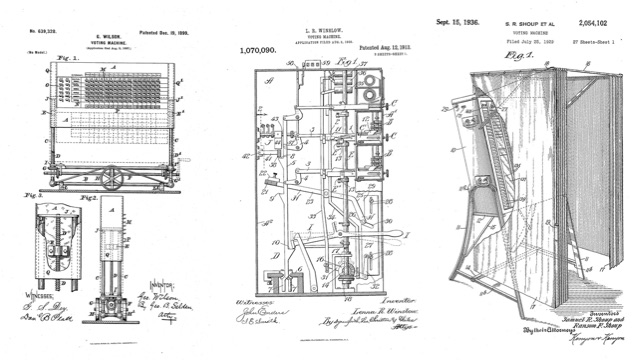Millions of Americans will vote today, and for the first time in years, many of them will use paper ballots. For a nation that’s produced some of the most advanced machines in the world, we’ve had a hell of a time figuring out one of the most important.
However you vote today, take a second (and make sure your machine isn’t switching your vote) to consider just how massive a project elections are: Over a single day, millions of Americans filter through gyms, fire halls, and community center to vote, creating individual data points in all are analysed over the course of a few hours.

Image: AP Photo/Jamie-Andrea Yanak
It’s a remarkable project of numbers and engineering, and it helps to explain why voting is still evolving two centuries after the first American election. To get a sense of how many iterations and failures have plagued voting day, look no further than the U.S. Patent and Trademark Office, which helpfully pulled some of the more notable machines from its archives today, adding, “as Americans embrace their Constitutional right to vote, they will have IP all around them.”
For example, this 1886 patent for a “combined tally sheet and poll book” would have been used to list voters names and their decisions, before the era of mechanised voting:
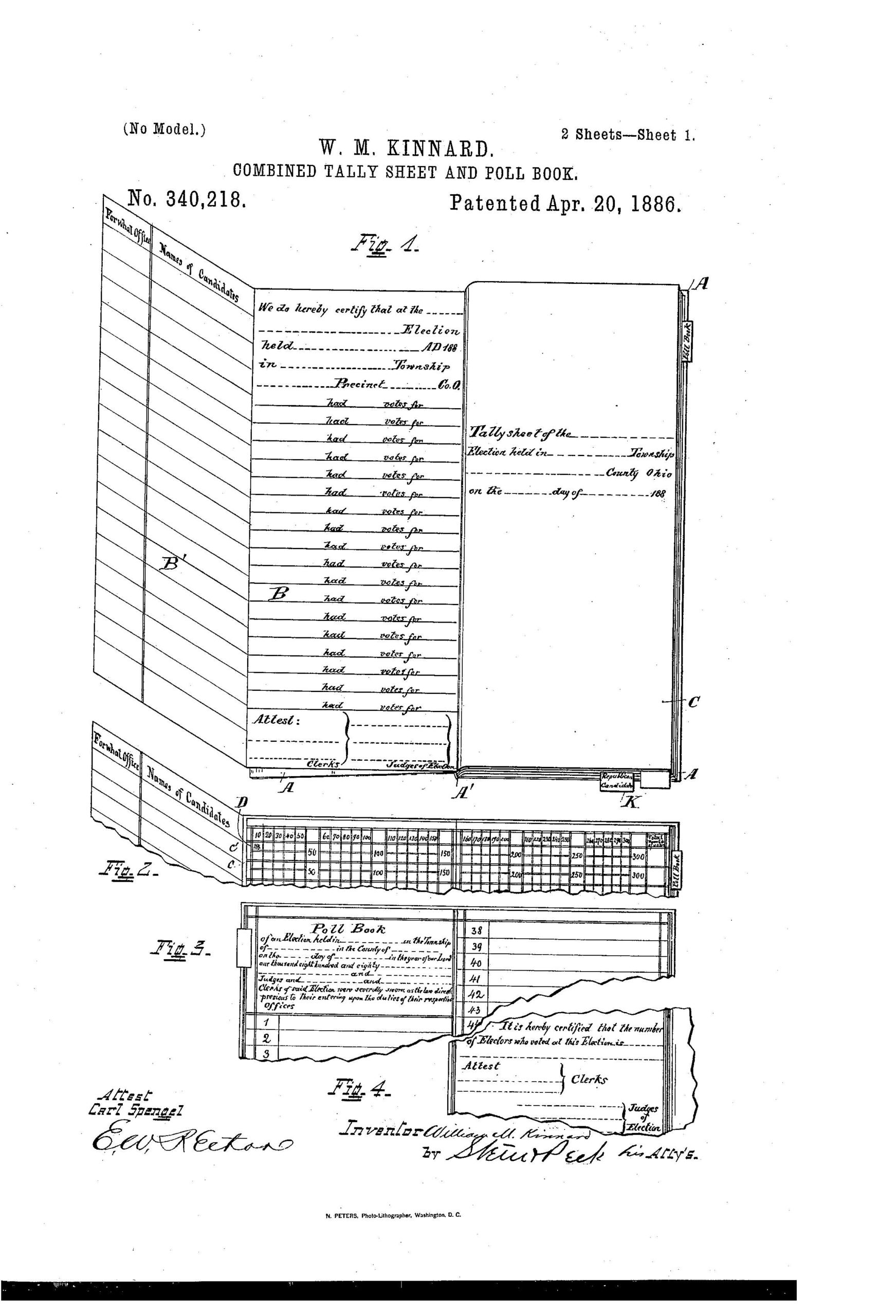
If you go all the way back in the USPTO’s archives, you’ll find dozens of patents for “improvements to ballot boxes,” to outsmart ballot stuffers. According to Richard Bensel’s The American Ballot Box in the Mid-Nineteenth Century, intimidation was common in polling places across the country, where Americans would cast their votes amongst their peers.
A 1874 patent involved a glass box with a complex mechanism that would sound a GONG every time a ballot was received. Three locks with there individual keys were needed to open it, which still put plenty of agency in the hands of the officials. It’s hard to say whether it was ever used, but easy to imagine the din it would have caused:
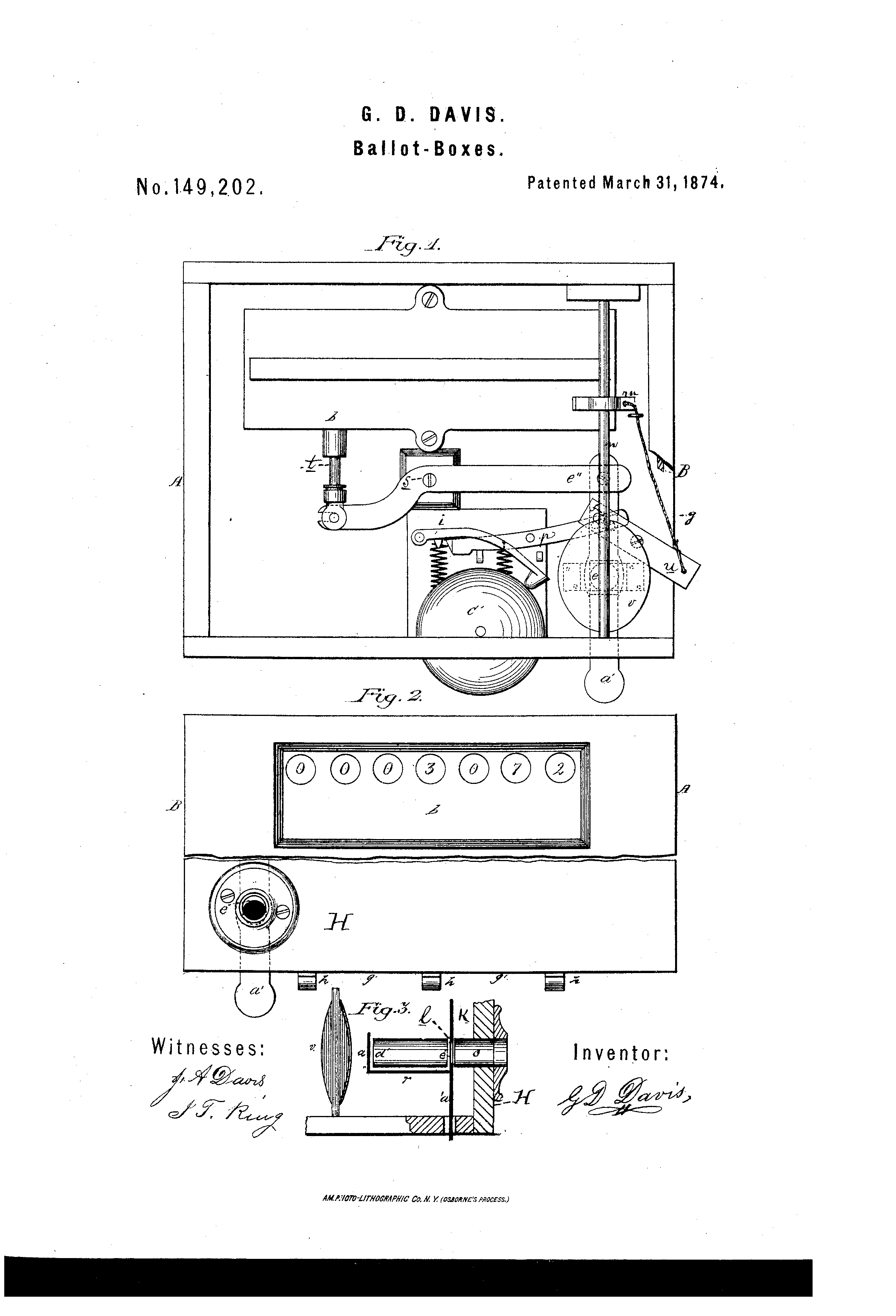
It wasn’t until the late 1880s and early 1890s that the U.S. adopted the so-called Australian ballot, or secret ballot, which allowed voters privacy to make their decisions and then cast their votes — a crucial step towards stopping intimidation at the polls. A 1889 patent from Charles Peck of Massachusetts described the design of a new system for “the voting compartments or shelves required to be used under the new laws,” which would let voters make their choices in peace:

But even the secret ballot has been contested. Last year in The Atlantic, Sasha Issenberg called for its abolition in the face of low voter turnouts.
By 1881, one Anthony. C. Beranek of Chicago had patented a “voting apparatus.” According to Beranek, “by means of this device all fraud is prevented and ballot-box stuffing impossible.” His push-button design would go on to become one of the first voting machine ever used in a general election.
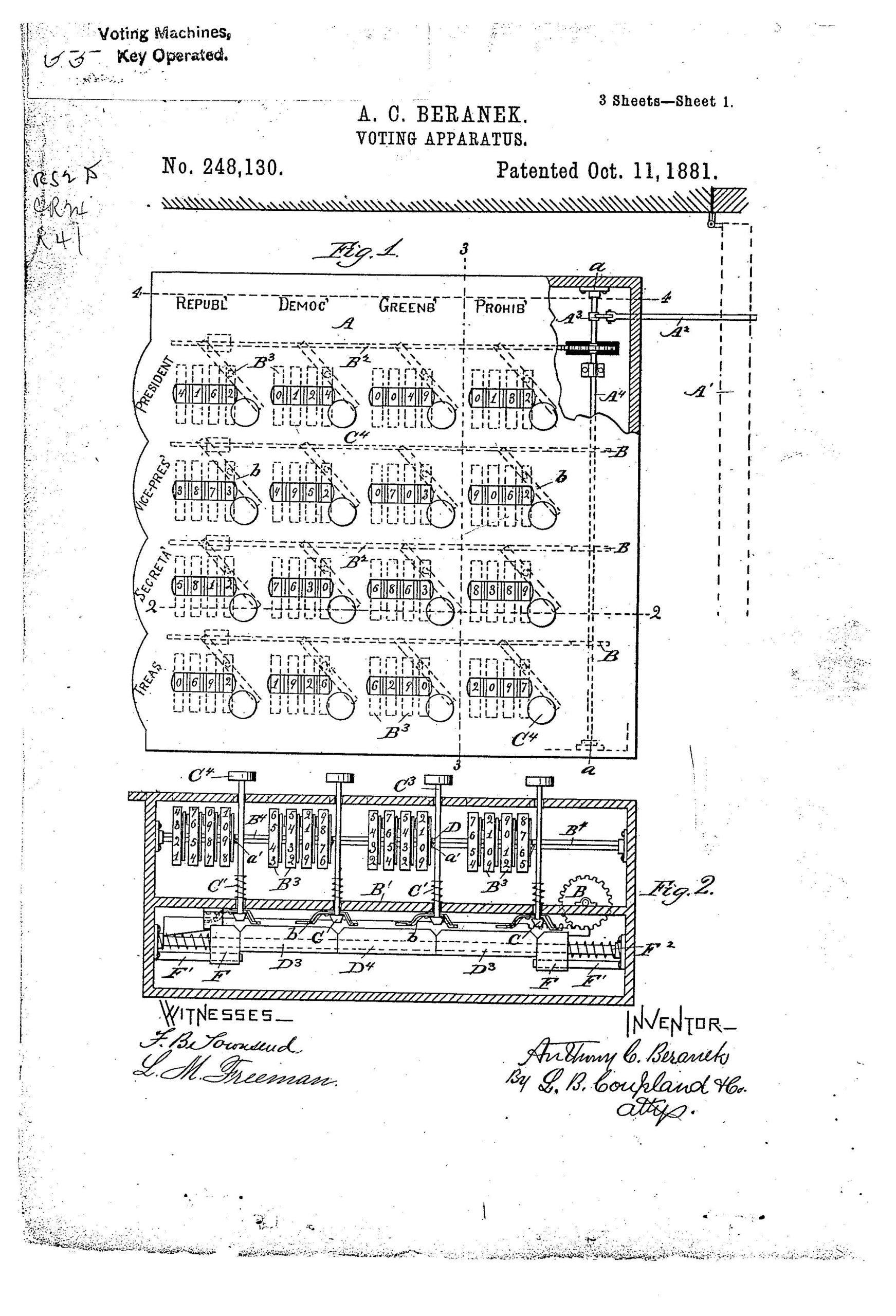
But the machine that really caught on was a 1889 design by J.H. Myers. His design was the first lever-based mechanism, and would become known as the Myers Automatic Booth. According to University of Iowa professor Douglas W. Jones excellent visual history of voting, Myers’ lever design went on to become one of the two reigning designs for voting machines, even after they were discontinued in 1982. He described it as a way to “protect mechanically the voter from rascaldom, and make the process of casting the ballot perfectly plain, simple and secret:”
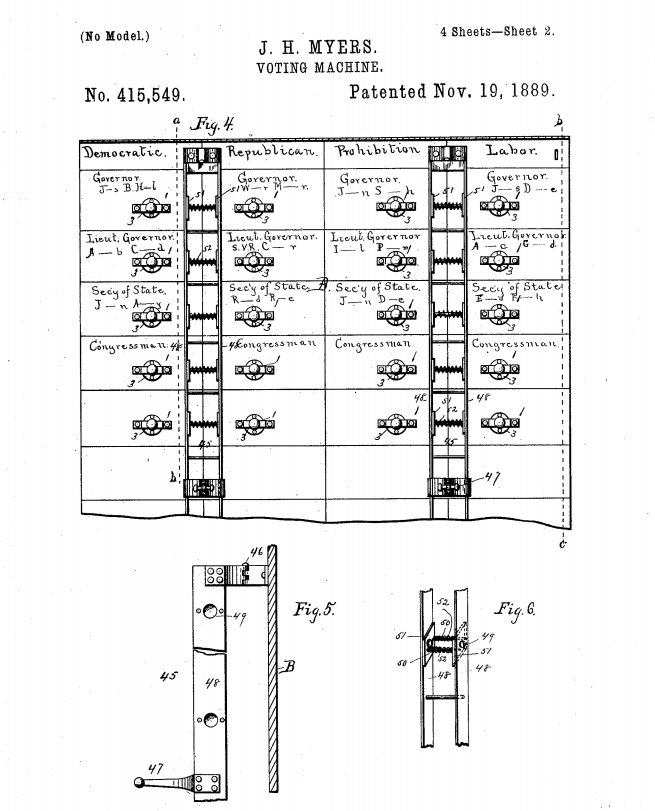
There were plenty of new ideas that didn’t make it, though. The USTPO points out this 1890 contraption, filed by one Kennedy Dougan of Missoula, Montana, inside of which was a roll of ballots that would be advanced by each voter. It included internal mechanisms “to prevent a voter with fraudulent or mischievous intent from operating it.” It’s unclear if the system was ever used, but it certainly seems like it didn’t make it very far.
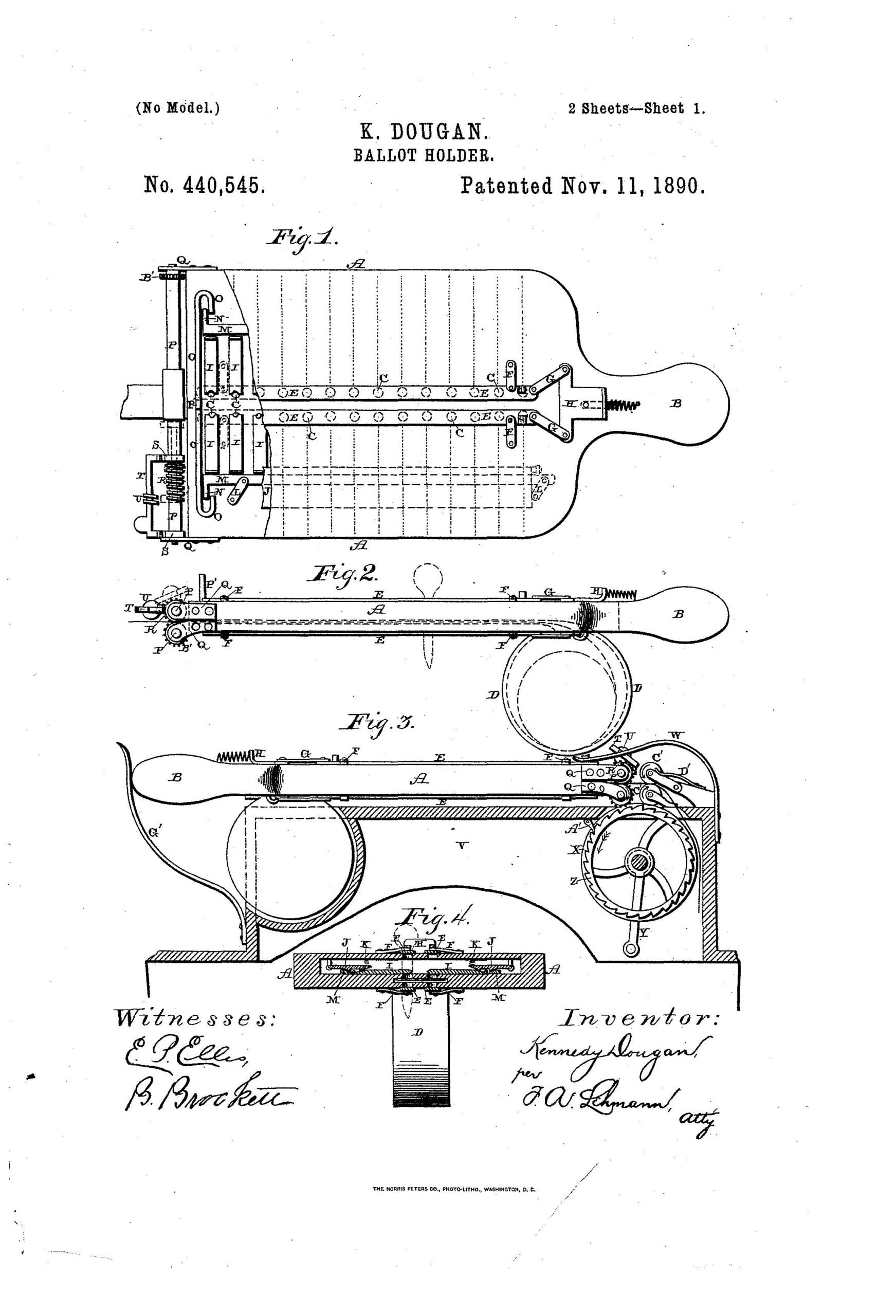
Other patents posited ideas that still stick around today. A 1899 patent from Alfred J. Gillespie of Rochester, N.Y. described something many of us will see today: A voting machine with a privacy-enhancing curtain.
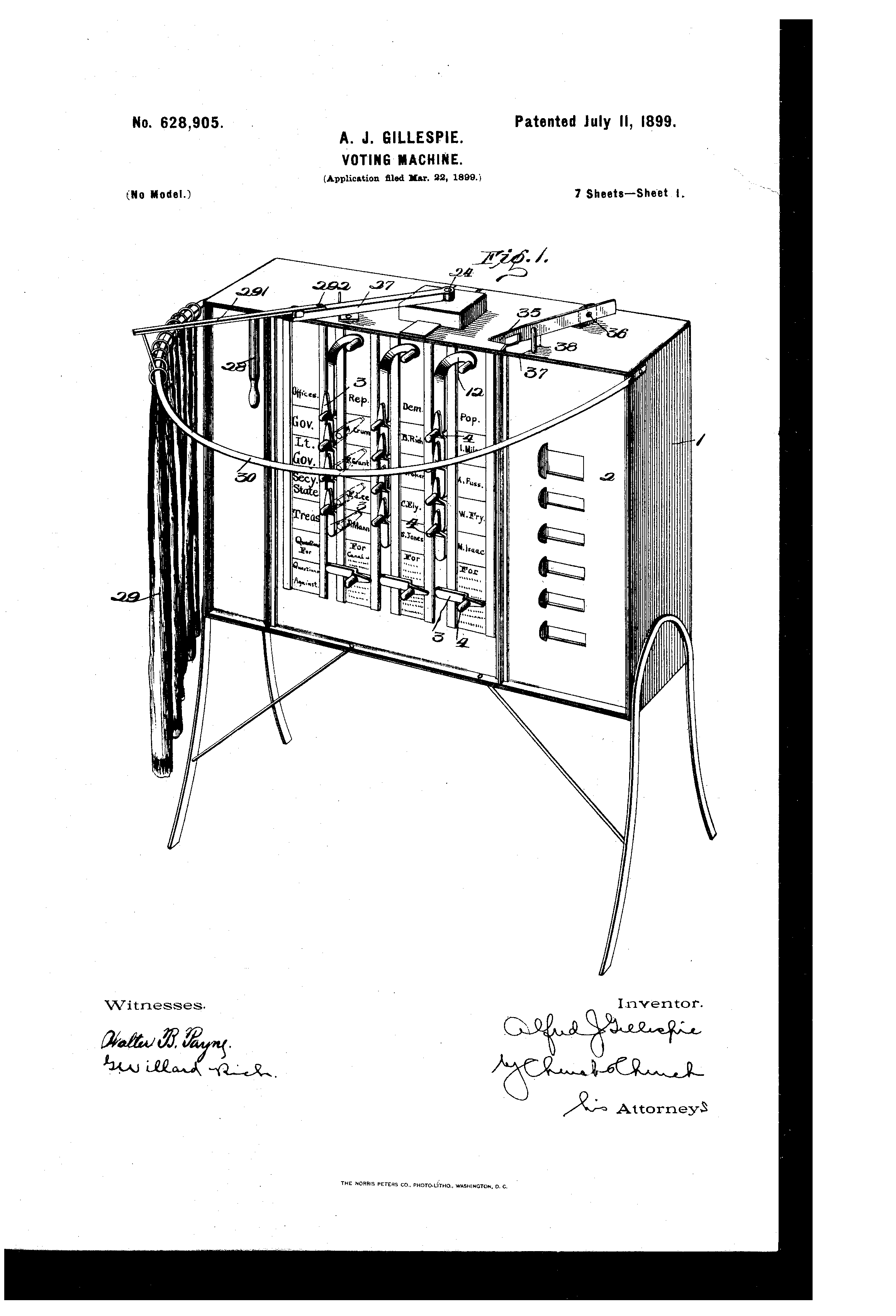
By the 1960s, computers had entered into the picture in their earliest form: Punch cards. Enter Joseph Harris, who patented several systems, like the one below, that would use a stylus to punch holes in a card, to be tabulated later on. This design was later bought (and sold) by IBM, eventually made its way into hundreds of thousands of voting booths under the name VotoMatic, including the Florida booths that led to the election recount of 2000.
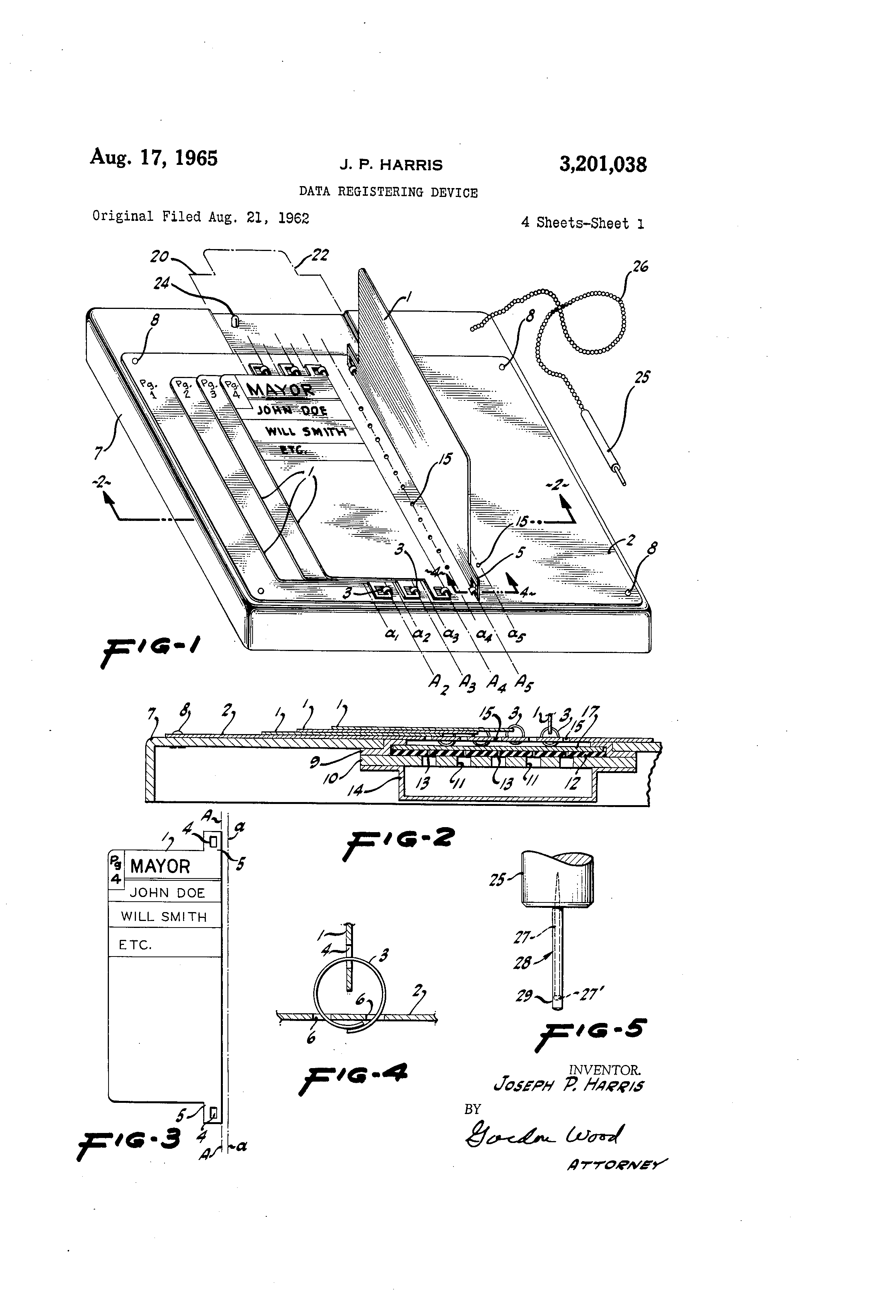
Even after the era of punch cards, confusion persisted, and companies continued to press forward with new voting technology. In 2005, IBM filed this patent for a fully electronic machine that would use an encrypted cartridge that functions in write-only mode while you’re voting. When voting is finished, it switches to read-only mode. “Data recorded into the array is encrypted so that only authorised poll auditing officials can read the array by decrypting the contents thereof via an appropriate encryption key,” says IBM in the filing.
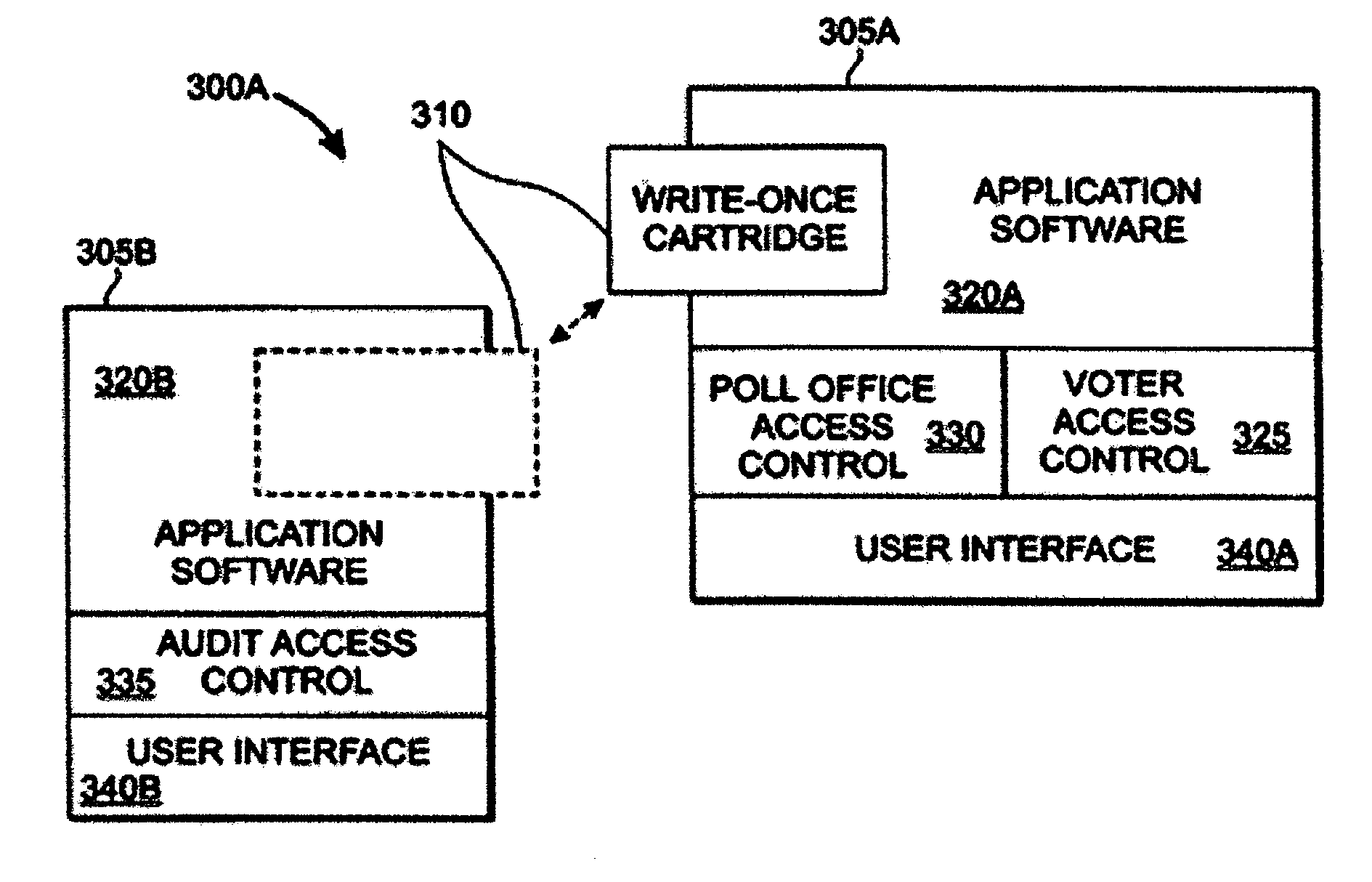
You could argue the advent of electronics has complicated the voting process further, but it’s also enabled inventors to look for ways to make it easier for Americans to vote. For example, this 1996 patent from Roland J. Harp Jr. of Winchester, Kentucky, shows an electronic machine that would give sight-disabled or illiterate voters an audio presentation of the ballot — that way, they wouldn’t need help from another person.
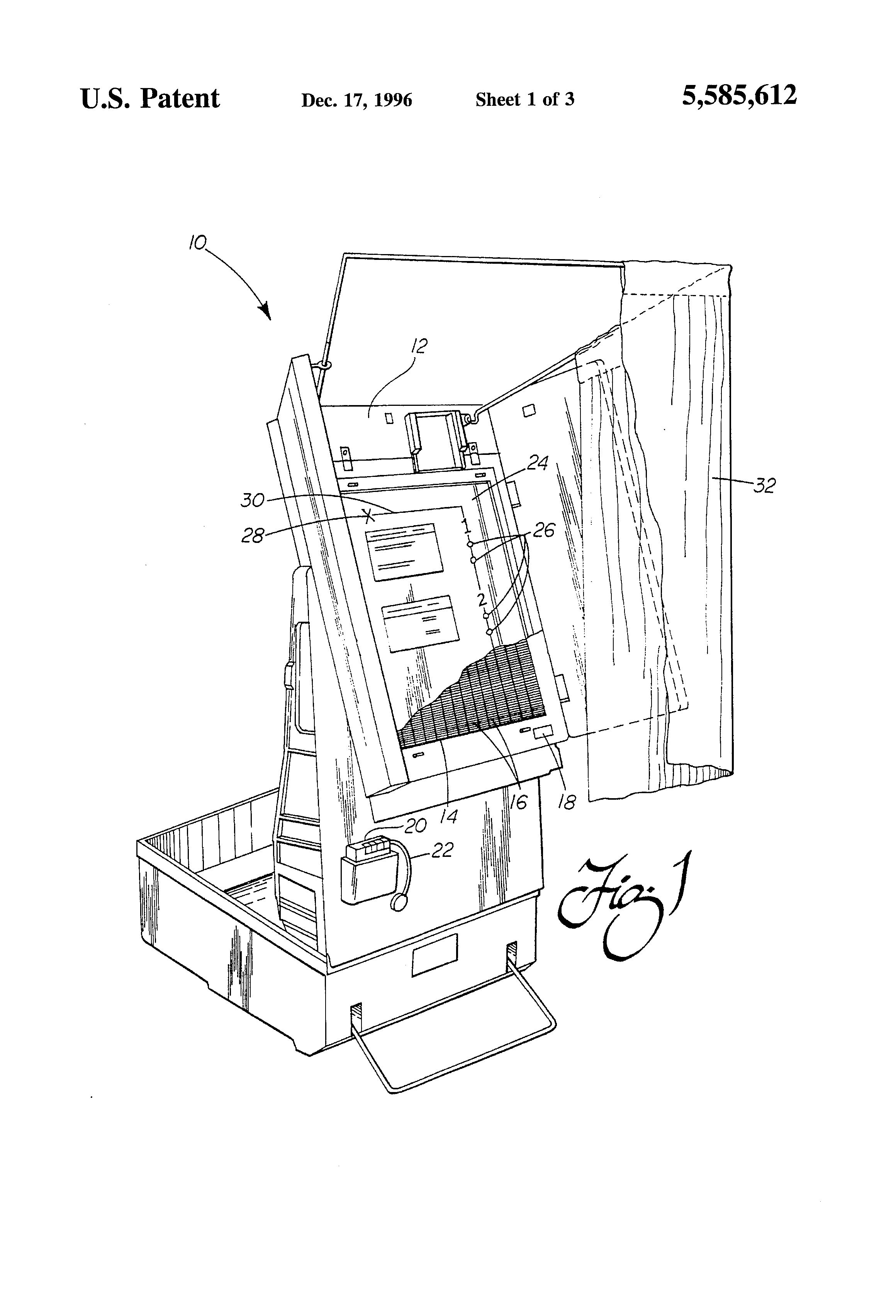
There are thousands of other voting machine patents in the USPTO archives, and they range from curious to terrible to important. Good or bad, they drive home a single point: A fool-proof system for voting in a country of millions is still very much a work in progress — and will likely always be. You can check out the rest of the office’s own list here.
